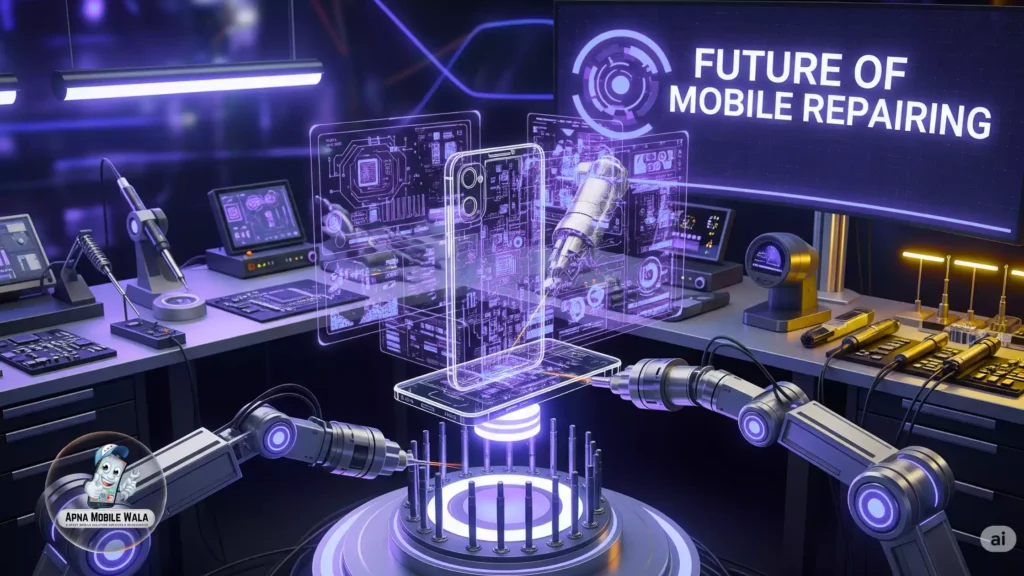The Future of Mobile Repairing: What’s Next After Screen Replacements?
In the last decade, mobile repairing has been synonymous with screen replacements. From cracked displays to shattered touch panels, replacing screens has been one of the most common repair services offered by technicians worldwide. However, with the rapid evolution of smartphone technology, the future of mobile repairs is moving far beyond just fixing broken screens.
Today, smartphones are becoming more advanced, compact, and complex. Manufacturers are introducing foldable displays, under-display fingerprint sensors, advanced AI chips, and multiple camera systems, which will soon change the way we think about repairs. Let’s explore what’s next for the mobile repairing industry and the trends that will shape its future.
1. Battery Upgrades & Sustainability Focus
Battery replacement has always been a part of mobile repairs, but the focus is now shifting towards sustainable battery technology.
- Solid-State Batteries: These promise longer life, faster charging, and improved safety.
- Battery Health Diagnostics: AI-powered diagnostics will help technicians predict battery failures before they happen.
- Eco-Friendly Recycling: Repair shops will focus more on recycling old batteries to reduce environmental waste.
2. Foldable and Rollable Display Repairs
With brands like Samsung, Oppo, and Xiaomi pushing foldable and rollable displays into the mainstream, repairing these screens will require specialized tools and training. The complexity of flexible OLED panels means that technicians will need high-precision equipment and manufacturer-level expertise to carry out repairs successfully.
3. Motherboard & Microchip-Level Repairs
As smartphones become smaller and more powerful, chip-level repairs will be a critical skill for technicians.
- Soldering under microscopes will become more common.
- AI-powered tools will help detect faults at the microchip level.
- Repairing rather than replacing logic boards will save costs and reduce e-waste.
4. Water Damage Recovery with Nanotechnology
Traditional water damage repairs involve cleaning and replacing corroded parts, but nanotechnology coatings will make water recovery more advanced.
- Liquid-resistant nano-coatings can prevent short circuits.
- Advanced drying chambers will restore devices faster and more efficiently.
5. Camera Module Upgrades & Lens Repair
With smartphones becoming the primary camera for most people, repairing high-resolution camera modules will be in high demand.
- Replacing periscope zoom lenses and gimbal stabilization systems will require precision.
- Technicians may also offer camera upgrades, swapping out older modules for newer ones.
6. AI-Assisted Repair Diagnostics
In the future, mobile repair shops will rely heavily on AI diagnostic software.
- Detect faults automatically.
- Predict potential issues before they happen.
- Reduce repair time and human error.
7. Right to Repair Movement
The Right to Repair movement is gaining global traction, pushing manufacturers to provide genuine parts and repair manuals to independent technicians. This will make repairs cheaper, faster, and more accessible to customers.
Future of Mobile Reparing
Conclusion
The future of mobile repairing is exciting, diverse, and tech-driven. While screen replacements will always be a part of the business, upcoming trends like chip-level repairs, AI diagnostics, foldable screen fixes, and eco-friendly battery solutions will define the next era of the industry.
For technicians, staying updated with emerging technologies and investing in advanced tools will be the key to success in this evolving market.
Read More
- Ledo Men’s and Women’s Watch Box Holder Review (2025): Is It Worth Buying in the U.S.?
- Top 5 Casio Watches Under ₹2,000 for Men
- Gemini Prompts for Image Generation Trending (Best AI Prompts for Boys 2025)
- The Perplexity Comet Browser: Your Ultimate Guide to Downloading and Using the AI-Powered Search Revolution
- Amazon Door Ring Bell: The Ultimate Guide to Wired & Wireless Smart Doorbells in the U.S.



